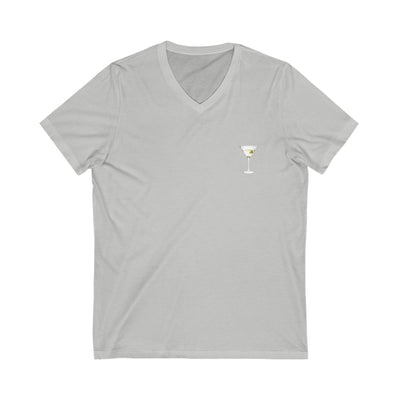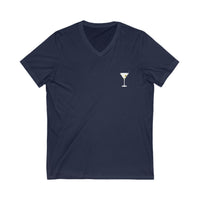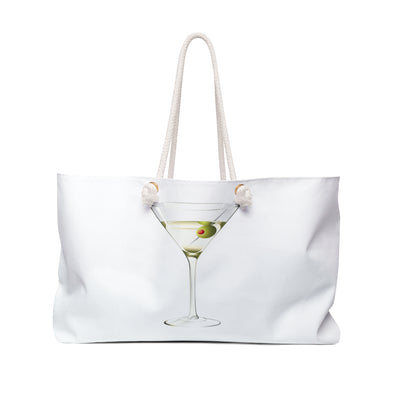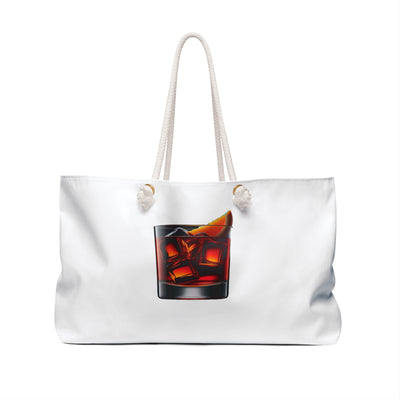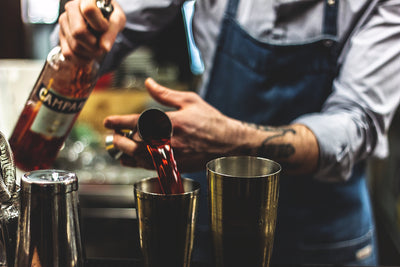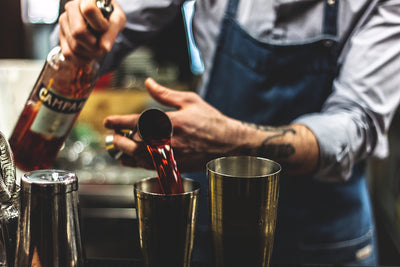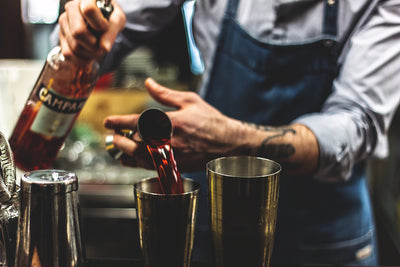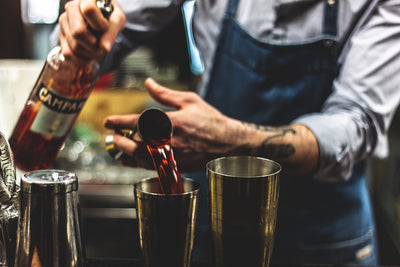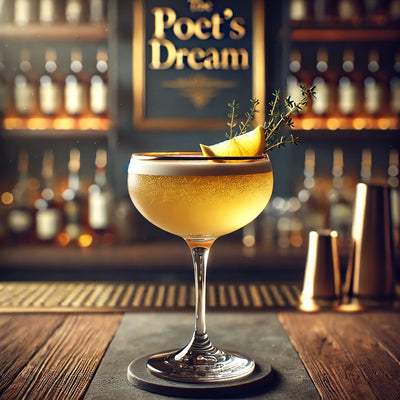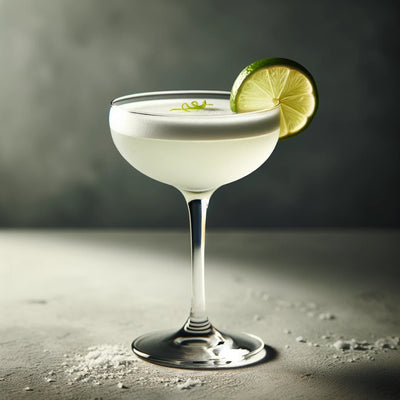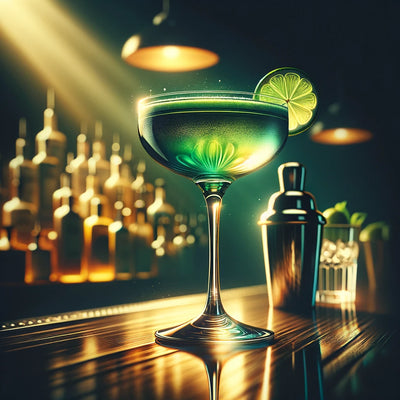What Cocktails Use Sweet Vermouth?

Exploring the Versatile World of Sweet Vermouth in Cocktails
Sweet vermouth, with its complex, aromatic, and slightly bitter profile, is a staple ingredient in the world of mixology. Known for its versatility and depth, this fortified wine flavored with various botanicals, including herbs, spices, and fruits, plays a pivotal role in crafting some of the most iconic cocktails. So, what cocktails use sweet vermouth? This article delves into the rich history and usage of sweet vermouth in cocktail making, highlighting classic drinks that showcase its unique flavor.
The Manhattan
The Manhattan stands as a testament to the elegance of sweet vermouth in cocktails. This timeless drink, composed of whiskey (typically rye or bourbon), sweet vermouth, and a dash of Angostura bitters, is a staple of cocktail menus worldwide. The sweet vermouth complements the whiskey's warmth with a hint of herbal sweetness, creating a balanced and sophisticated drink often garnished with a maraschino cherry.
The Negroni
The Negroni, with its bold and bitter profile, is another classic cocktail that beautifully incorporates sweet vermouth. Equal parts gin, Campari, and sweet vermouth combine to create a cocktail with depth and complexity. The sweet vermouth softens the Campari's bitterness and enhances the gin's botanicals, resulting in a harmonious and captivating drink typically served on the rocks with an orange peel garnish.
The Americano
A precursor to the Negroni, the Americano is a lighter, more refreshing cocktail that uses sweet vermouth alongside Campari and soda water. This effervescent drink, served in a highball glass with ice and garnished with a slice of lemon or orange, is perfect for sipping on a warm afternoon. The sweet vermouth balances the Campari's bitterness and adds a herbal, sweet note to the cocktail.
The Rob Roy
Named after the Scottish folk hero Rob Roy MacGregor, this cocktail is essentially a Scotch whisky version of the Manhattan. Combining Scotch whisky with sweet vermouth and Angostura bitters, the Rob Roy can be adjusted to suit individual tastes by varying the ratio of whisky to vermouth. The sweet vermouth enhances the Scotch's smoky notes, creating a drink that's both bold and smooth.
The Martinez
Often cited as a precursor to the modern Martini, the Martinez is a cocktail that features gin, sweet vermouth, maraschino liqueur, and a dash of bitters. This cocktail showcases sweet vermouth's ability to meld with the juniper-forward profile of gin, softened by the subtle sweetness of maraschino liqueur. The Martinez is a refined and complex cocktail, usually garnished with a lemon twist or cherry.
The Vieux Carré
Originating from the French Quarter (Vieux Carré) in New Orleans, this cocktail is a sophisticated blend of rye whiskey, Cognac, sweet vermouth, Bénédictine, and a combination of Peychaud’s and Angostura bitters. The sweet vermouth plays a crucial role in uniting the varied flavors, adding a herbal sweetness that complements the richness of the Cognac and the spiciness of the rye.
Conclusion
Sweet vermouth is an essential component of many classic cocktails, offering a depth of flavor that enhances and complements a wide range of spirits. From the robust Manhattan to the effervescent Americano, understanding what cocktails use sweet vermouth is key to appreciating the versatility and complexity this ingredient brings to mixology. Whether you’re a professional bartender or a home cocktail enthusiast, experimenting with sweet vermouth can open up a world of flavor possibilities and elevate your cocktail creations to new heights.
Frequently asked question about sweet vermouth
Question: What is sweet vermouth?Answer: Sweet vermouth, known as "vermouth rosso" in Italian, is a fortified wine that has been flavored with various botanicals such as roots, barks, flowers, seeds, herbs, and spices. One of the key characteristics of sweet vermouth, which distinguishes it from its dry and white counterparts, is its sweet flavor profile, typically achieved by adding a caramelized sugar or directly caramel to the wine. This type of vermouth originates from Italy and is a crucial ingredient in many classic cocktails, including the Manhattan, Negroni, and Americano.
Key Characteristics of Sweet Vermouth:
- Color: It generally exhibits a rich, dark red or amber color.
- Flavor: Sweet vermouth is noted for its sweet taste, balanced by a complex and aromatic blend of botanicals. The exact flavor can vary significantly depending on the brand and the specific recipe of herbs and spices used.
- Alcohol Content: The alcohol content usually ranges from 14.5% to 18% ABV (Alcohol By Volume), making it stronger than unfortified wine but not as potent as spirits.
- Botanicals: The selection of botanicals can include wormwood (from which vermouth gets its name—Wermut being the German word for wormwood), cloves, cinnamon, citrus peel, chamomile, juniper, and more, each contributing to the vermouth's distinctive aroma and taste.
- Use: Beyond its role in cocktails, sweet vermouth can also be enjoyed on its own, typically served over ice with a twist of citrus peel, or as part of a sophisticated culinary experience, used to enhance sauces and desserts.
Production Process:
- Base Wine: Sweet vermouth starts with a base of white wine. Some producers may use red wine for specific styles, but the predominant choice is white.
- Fortification: The wine is fortified with additional alcohol, usually a neutral grape spirit, to increase its alcohol content and stability.
- Flavoring: The fortified wine is then infused with a blend of botanicals. This infusion can be achieved through various methods, including maceration or distillation, to extract the flavors.
- Sweetening: The infusion is sweetened, often with a combination of sugar, caramelized sugar, or must (grape juice), to achieve the desired level of sweetness.
- Aging: Some vermouths are aged for a period to develop further depth and complexity in flavor.
Selection and Storage:
When selecting a sweet vermouth, consider the cocktail or use you have in mind, as different brands and styles can vary widely in flavor and aroma. Once opened, sweet vermouth should be stored in the refrigerator to maintain its freshness and consumed within a few months to enjoy its optimal taste.
Question: what does sweet vermouth taste like?
Answer: Sweet vermouth tastes rich and complex, with a noticeable sweetness balanced by herbal, floral, and sometimes bitter undertones. This fortified wine's flavor profile results from infusing a base wine with a blend of botanicals, which can include herbs, spices, flowers, and barks. The specific taste can vary significantly between different brands and recipes, but here are some common flavor characteristics found in sweet vermouth:
-
Sweetness: As the name suggests, sweet vermouth has a prominent sweet flavor, which can come from added sugar or caramelized sugar. This sweetness is more pronounced than in dry vermouth.
-
Herbal Notes: Many sweet vermouths exhibit strong herbal qualities, with flavors that might remind you of wormwood, mint, or chamomile.
-
Spicy Warmth: Spices such as cinnamon, clove, and nutmeg are often used in the infusion process, adding warmth and complexity.
-
Bitterness: Despite its sweetness, there is often a subtle bitter edge to the flavor, coming from botanicals like wormwood or gentian. This bitterness is typically well-balanced with the sweetness and doesn't overwhelm the palate.
-
Fruitiness: Some sweet vermouths have a fruit-forward character, with notes of dark berries, citrus peel, or tropical fruits.
-
Aromatic: The aroma of sweet vermouth is usually vibrant and can include scents of vanilla, orange zest, and various herbs and spices, contributing to its overall flavor experience.
-
Woody and Earthy: Aging processes and specific botanicals can introduce woody or earthy undertones, adding depth to the vermouth's profile.
Sweet vermouth is versatile and can be enjoyed on its own, over ice, with a splash of soda, or as a key ingredient in cocktails like the Manhattan, Negroni, or Americano, where it complements and enhances the flavors of the other components.
Question: what is sweet vermouth made of?
Answer: Sweet vermouth is made from a base of wine, fortified with additional alcohol, and aromatized with a variety of botanicals. The process and ingredients that define sweet vermouth include:
-
Wine Base: The foundation of sweet vermouth is wine, typically white, although some varieties use red wine. This base is selected for its quality and neutrality in flavor to ensure the botanicals' aromas and tastes are prominent in the final product.
-
Fortification: The wine is fortified with a distilled spirit, usually a neutral grape brandy, which increases the alcohol content. This fortification process not only adds strength but also helps to preserve the vermouth and extend its shelf life.
-
Botanicals: The distinctive character of sweet vermouth comes from the addition of various botanicals—herbs, spices, flowers, and fruits. Common botanicals include wormwood (the ingredient from which vermouth derives its name), along with others like clove, cinnamon, citrus peel, cardamom, juniper, anise, and chamomile. Each vermouth producer has its own secret blend of botanicals, contributing to the unique flavor profile of each brand.
-
Sweetening: Sweet vermouth is characterized by its sweetness, achieved through the addition of sugar or caramelized sugar. This sweetness is balanced against the bitterness of some botanicals, particularly wormwood, creating a harmonious and complex flavor profile.
-
Aging: Some vermouths are aged in barrels for a period of time. While not a requirement, aging can mellow the flavors and integrate the botanicals more deeply into the wine base.
-
Coloring: In some cases, sweet vermouth may have coloring added to achieve the desired amber or reddish hue. This is more common in vermouths that use a white wine base but want to achieve the traditional dark color associated with sweet vermouth.
The combination of these ingredients and processes results in a fortified wine that is rich and complex, with a perfect balance of sweetness, herbal bitterness, and aromatic depth. Sweet vermouth can be enjoyed on its own, often over ice with a twist of citrus, or as a key ingredient in classic cocktails like the Manhattan, Negroni, and Martini.
Question: How is sweet vermouth made?
Answer: Sweet vermouth is a type of fortified wine that is flavored with various botanicals, including roots, barks, flowers, seeds, herbs, and spices. The process of making sweet vermouth involves several key steps:
-
Base Wine Production: The first step in making sweet vermouth is the creation of a base wine. This wine is typically made from white grape varieties, although some producers may use red grapes for specific styles of vermouth. The grapes are harvested, crushed, and fermented to produce a dry wine with a relatively neutral flavor profile, which serves as a canvas for the addition of botanical flavors.
-
Infusion of Botanicals: Once the base wine is ready, a mixture of botanicals is added to impart flavor and aroma to the vermouth. The exact combination of botanicals used is often a closely guarded secret and varies widely between different vermouth producers. Common botanicals include wormwood (from which vermouth gets its name—Wermut is German for wormwood), cloves, cinnamon, citrus peel, chamomile, juniper, and more. The botanicals can be infused into the wine in several ways, including maceration (soaking the botanicals in the wine), distillation (distilling the wine with the botanicals), or a combination of both.
-
Sweetening: After the infusion process, the vermouth is sweetened. Sweet vermouth, as the name suggests, has a significant amount of sugar added to it, which distinguishes it from dry vermouth. The sweetness can come from cane sugar, caramelized sugar, or must (grape juice that hasn't been fermented into wine). The amount of sugar added varies but is typically around 10-15% of the volume, giving sweet vermouth its characteristic sweet taste.
-
Fortification: To increase the alcohol content and stabilize the vermouth for longer shelf life, the infused and sweetened wine is fortified with additional alcohol, usually grape brandy. This brings the alcohol content up to around 15-18% ABV (alcohol by volume), making it less perishable and more robust in flavor.
-
Aging: Some vermouths are aged for a period to allow the flavors to meld and develop. The aging process can take place in barrels or stainless steel tanks, depending on the desired outcome. Aging can add complexity and depth to the vermouth's flavor profile.
-
Filtration and Bottling: Finally, the vermouth is filtered to remove any solid particles and bottled. Some producers may also pasteurize the vermouth to ensure stability and prevent spoilage.
The result is a sweet, aromatic, and complex fortified wine that can be enjoyed on its own or used as a key ingredient in various cocktails. Sweet vermouth is particularly popular in classic cocktails such as the Manhattan and Negroni.
Question: How long does sweet vermouth last?
Answer: Sweet vermouth, once opened, should ideally be stored in the refrigerator to maintain its freshness and flavor. When properly refrigerated and tightly sealed, an opened bottle of sweet vermouth can last for about 4 to 6 weeks before its quality starts to decline. It's important to note that vermouth is a fortified wine, and like other wines, it will deteriorate over time once exposed to air. Signs that sweet vermouth has gone bad include a noticeable change in taste, aroma, or appearance. To extend its shelf life, always ensure the cap is tightly secured after each use and keep it away from direct sunlight and heat.
Question: what cocktails use sweet vermouth?
Answer: Sweet vermouth, a fortified wine flavored with various botanicals, is a versatile ingredient in the world of mixology, adding depth and complexity to a wide range of cocktails. Here's a detailed list of classic and popular cocktails that feature sweet vermouth:
-
Manhattan: A sophisticated blend of whiskey (usually rye or bourbon), sweet vermouth, and a dash of Angostura bitters, often garnished with a maraschino cherry.
-
Negroni: An iconic Italian cocktail made with equal parts gin, sweet vermouth, and Campari, garnished with an orange peel.
-
Americano: A lighter aperitif consisting of Campari, sweet vermouth, and soda water, served over ice with an orange slice.
-
Martinez: Considered a precursor to the martini, this cocktail mixes gin, sweet vermouth, maraschino liqueur, and a dash of Angostura bitters.
-
Rob Roy: Essentially a Scotch whisky Manhattan, combining Scotch, sweet vermouth, and Angostura bitters, garnished with a maraschino cherry or a lemon twist.
-
Boulevardier: A whiskey-based cousin of the Negroni, featuring bourbon or rye, Campari, and sweet vermouth, garnished with an orange twist.
-
Torino-Milano: A simple yet refreshing mix of sweet vermouth and Campari, served on the rocks and garnished with an orange slice.
-
Vieux Carré: A complex cocktail from New Orleans, made with rye whiskey, Cognac, sweet vermouth, Bénédictine, and a dash of Peychaud's and Angostura bitters.
-
Blood & Sand: A unique blend of Scotch whisky, sweet vermouth, cherry brandy (or Heering), and fresh orange juice.
-
El Presidente: A Cuban classic combining white rum, sweet vermouth, orange curaçao, and grenadine, garnished with an orange twist.
-
Manhattan Transfer: A variation on the classic Manhattan, adding a splash of Fernet-Branca to the mix for an herbal touch.
-
Sweet Vermouth & Tonic: A simple, refreshing drink mixing sweet vermouth with tonic water, served over ice and garnished with a lemon or orange twist.
-
Hanky Panky: A gin and sweet vermouth cocktail with a touch of Fernet-Branca, created by Ada Coleman at the Savoy Hotel in London.
-
The Bamboo: A sherry-based cocktail with equal parts dry sherry and sweet vermouth, along with a dash of Angostura and orange bitters.
-
The Tipperary: A mix of Irish whiskey, sweet vermouth, and green Chartreuse, offering a herbal twist on the classic whiskey cocktail template.
These cocktails showcase the broad range of flavors and styles that sweet vermouth can contribute to your mixology repertoire, from stiff and boozy to light and aperitif-style. Experimenting with these recipes can lead to discovering your perfect sweet vermouth cocktail.












